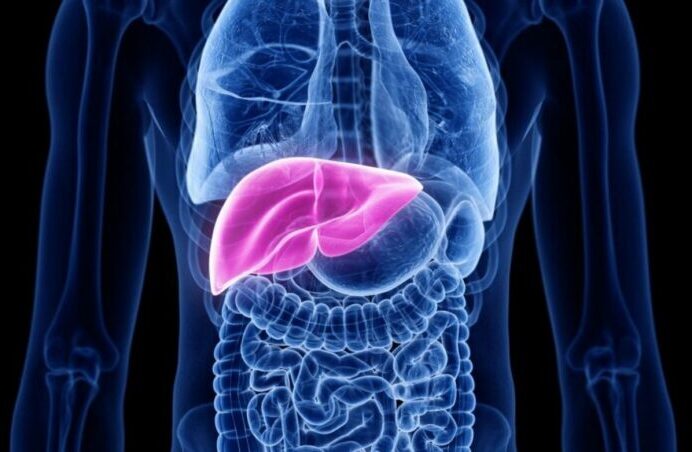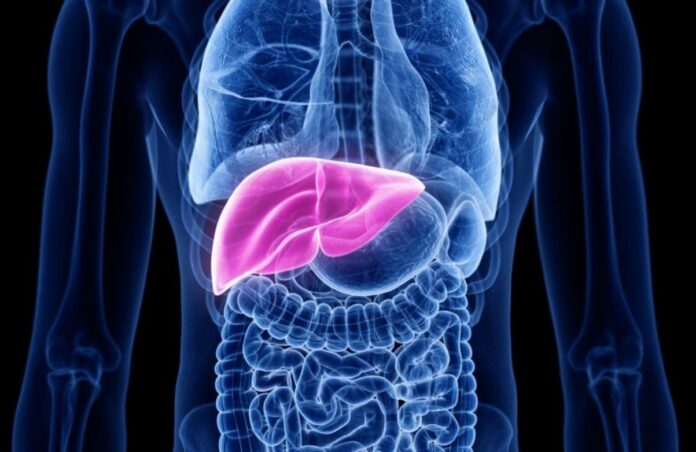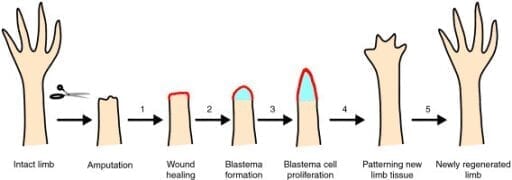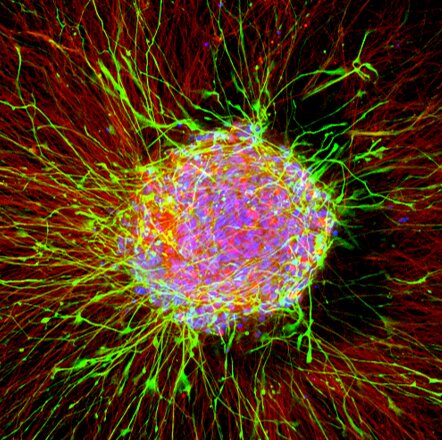
via Revyuh
Leprosy is one of the world’s oldest and most persistent diseases but the bacteria that cause it may also have the surprising ability to grow and regenerate a vital organ.
Scientists have discovered that parasites associated with leprosy can reprogramme cells to increase the size of a liver in adult animals without causing damage, scarring or tumours.
The findings suggest the possibility of adapting this natural process to renew ageing livers and increase healthspan – the length of time living disease-free – in humans.
Experts say it could also help regrow damaged livers, thereby reducing the need for transplantation, which is currently the only curative option for people with end-stage scarred livers.
Liver regrowth
Previous studies promoted the regrowth of mouse livers by generating stem cells and progenitor cells – the step after a stem cell that can become any type of cell for a specific organ – via an invasive technique that often resulted in scarring and tumour growth.
To overcome these harmful side-effects, Edinburgh researchers built on their previous discovery of the partial cellular reprogramming ability of the leprosy-causing bacteria, Mycobacterium leprae.
Working with the US Department of Health and Human Services in Baton Rouge, Louisiana, the team infected 57 armadillos – a natural host of leprosy bacteria – with the parasite and compared their livers with those of uninfected armadillos and those that were found to be resistant to infection.
They found that the infected animals developed enlarged – yet healthy and unharmed – livers with the same vital components, such as blood vessels, bile ducts and functional units known as lobules, as the uninfected and resistant armadillos.
The team believe the bacteria ‘hijacked’ the inherent regenerative ability of the liver to increase the organ’s size and, therefore, to provide it with more cells within which to increase.
Cells reprogrammed by leprosy bacteria
The researchers also discovered several indicators that the main kinds of liver cells – known as hepatocytes – had reached a “rejuvenated” state in the infected armadilllos.
Livers of the infected armadillos also contained gene expression patterns – the blueprint for building a cell – similar to those in younger animals and human foetal livers.
Genes related to metabolism, growth and cell proliferation were activated and those linked with ageing were downregulated, or suppressed.
Scientists think this is because the bacteria reprogrammed the liver cells, returning them to the earlier stage of progenitor cells, which in turn became new hepatocytes and grow new liver tissues.
Hope for disease treatment
The team are hopeful that the discovery has the potential to help develop interventions for ageing and damaged livers in humans. Liver diseases currently result in two million deaths a year worldwide.
Professor Anura Rambukkana, lead author from University of Edinburgh’s Centre for Regenerative Medicine, said:
If we can identify how bacteria grow the liver as a functional organ without causing adverse effects in living animals, we may be able to translate that knowledge to develop safer therapeutic interventions to rejuvenate aging livers and to regenerate damaged tissues.
Original Article: Ancient disease has potential to regenerate livers
More from: University of Edinburgh
The Latest Updates from Bing News
Go deeper with Bing News on:
Liver regeneration
- COVID patient's strange symptoms save her from deadly undiagnosed diseases. Here's what doctors discovered.
Vicky Dennis went to the hospital with strange symptoms when she had COVID. Doctors found she had two undiagnosed, life-threatening diseases and needed a liver transplant to survive.
- Montreal researchers developing 'mini liver' to treat acute liver failure
Montreal researchers are developing a “mini liver” that could, in a few years, allow some patients to survive long enough for their liver to heal and avoid the transplant of a new one altogether.
- Boehringer Ingelheim and Ochre Bio partner on liver disease in deal worth over $1bn
Under the terms of the agreement, Ochre will receive up to $35m in upfront and near-term research-based milestone payments, as well as possible milestones for clinical, regulatory and commercial ...
- Hoping for a sense of normal: Michigan toddler needs a living liver donor
Blake Hermann is younger than most children who need a liver transplant, but the medications doctors have given the toddler have failed to help.
- Ochre Bio announces partnership with Boehringer Ingelheim to develop novel regenerative treatments for patients with advanced liver disease
Ochre Bio announces partnership with Boehringer Ingelheim to develop novel regenerative treatments for patients with advanced liver disease ...
- The Role of Bone Marrow Stem Cells in Liver Regeneration
The current interest in the role of bone marrow stem cells in liver regeneration began with the discovery that rat oval cells induced by a classic carcinogen regimen expressed genes typically ...
- Mom, 36, felt pain in her side. It was colon cancer that spread to her liver
The donor can still live a normal life without a full organ, Machado says. “The liver has the potential to regenerate,” he says. “If we remove the right side, it doesn’t form a whole new ...
- Kinase inhibitor rescues the liver
The healthy liver has a remarkable capacity to regenerate. However, injury — due to disease or extended hepatectomy — diminishes this regenerative capacity, and hepatocytes may be unable to ...
- Next milestone in the treatment of liver tumors and acute and chronic liver diseases
The drug candidate HRX-215 is a so-called MKK4 inhibitor, i.e. the administered drug inhibits the MKK4 protein found in liver cells and thus leads to an increase in the regeneration of liver cells.
- Best Foods for Dogs With Liver Problems & What to Avoid
Provide good nutrition to maintain energy and health. Promote liver regeneration and reduce stress on the organ. Prevent and minimize potential complications, such as hepatic encephalopathy, where the ...
Go deeper with Bing News on:
Leprosy bacteria
- “Cashew nuts are a healthy snack choice due to their nutritional benefits.”
Compiled and written by Dr. Harold Gunatillake (Order of Australia (OAM), FRCS, FICS, FIACS, AM(Sing), MBBS(Cey) Sri Lankan cashews are highly sought after for their milky flavour, and the market for ...
- All the diseases you might have if you lived in a medieval city (video)
The Black Plague, caused by the Yersinia pestis bacteria, remains one of the deadliest pandemics in human history ...
- Unraveling the Stigma: The Latest on Global Leprosy Rates and Effective Treatment Strategies
Leprosy, an infectious ailment, manifests through distressing skin lesions and nerve impairment affecting limbs and other bodily regions. Its presence extends back to antiquity. Contrary to common ...
- Leprosy Is Spreading in Florida
Leprosy is on the rise in the U.S., with Florida seeing a fifth of all new cases—and experts are mystified as to why.
- What you should know about flesh-eating bacteria on beaches
Vibrio bacteria naturally occur in some coastal waters and reach ... it’s not like you can track this and then you’re watching your fingers fall off, like a leprosy,” said Jae Williams, press ...
Go deeper with Google Headlines on:
Leprosy bacteria
[google_news title=”” keyword=”leprosy bacteria” num_posts=”5″ blurb_length=”0″ show_thumb=”left”]











